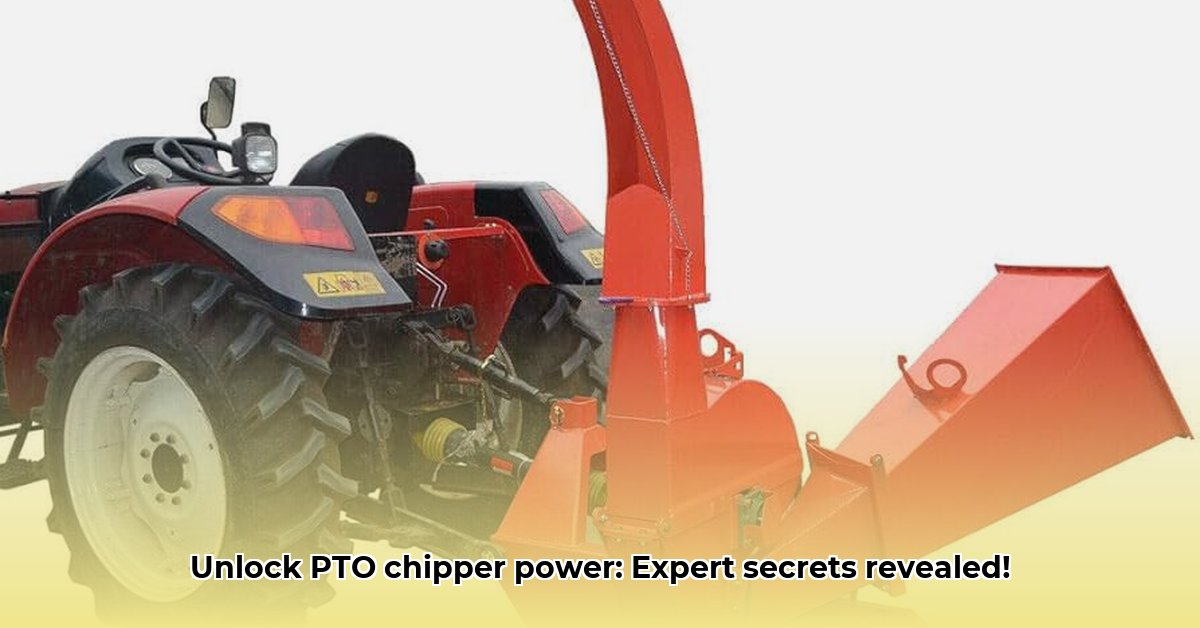
Understanding Tractor PTO Chippers: A Comprehensive Guide
Tractor PTO (Power Take-Off) chippers are powerful and efficient machines used for processing branches and woody debris. Unlike gas-powered or electric chippers, they leverage the power of your tractor's PTO shaft, offering significant advantages in terms of power and fuel efficiency. This guide will help you navigate the world of PTO chippers, empowering you to choose the right model for your needs. We'll cover everything from capacity and power requirements to maintenance and safety. For more information on chippers for smaller tractors, check out this helpful resource: Subcompact Tractor Chippers.
Buying Your Tractor PTO Chipper: An Instructional Guide
Chipping Capacity: How Much Wood Can You Process?
Selecting the right chipper hinges on your chipping needs. High-volume applications, such as land clearing or large-scale landscaping, demand a chipper with a substantial capacity (measured in cubic yards per hour, yd³/hr). For occasional use, a smaller model might suffice. Consider the type of wood you'll be processing; hardwood is denser and requires more power than softwood. Wet wood is also more difficult to chip. The following table offers a hypothetical comparison:
| Model | Chipping Capacity (yd³/hr) | Max. Branch Diameter (inches) | Estimated Time (5 yd³ Dense Oak) | Estimated Time (5 yd³ Dry Pine) |
|---|---|---|---|---|
| MightyChip 5000 | 5 | 6 | 1 hour | 30 minutes |
| CompactChip 2000 | 2 | 4 | 2.5 hours | 1 hour 15 minutes |
| SuperShredder 10000 | 10 | 8 | 30 minutes | 15 minutes |
Note: These times are estimates and may vary based on wood type, moisture content, and blade sharpness.
Do you often process large volumes of dense hardwood? If so, a high-capacity chipper is essential for efficient operation. For occasional use, a smaller model can be a more cost-effective option.
Power Source (PTO): Harnessing Your Tractor's Power
PTO chippers connect directly to your tractor's PTO shaft, utilizing its power for operation. This offers several advantages: increased power compared to gasoline or electric models, potentially better fuel efficiency, and simplified operation (no separate engine to maintain). However, ensuring compatibility between your tractor and chipper is crucial. Always check your tractor's PTO horsepower rating and compare it to the chipper's requirements. Safety is paramount: Never engage the PTO until the chipper is fully disengaged from the tractor.
Ease of Use: Streamlining Your Work
Features like self-feeding mechanisms significantly reduce physical effort, making the chipping process much more efficient. A larger hopper minimizes interruptions for reloading. Think about your comfort and efficiency. Vertical hoppers or chutes that guide branches smoothly also enhance the user experience. How will these features impact your workflow?
Maintenance Requirements: Keeping Your Chipper in Top Shape
Regular maintenance is essential for optimal performance and longevity. Sharpen the blades regularly (frequency depends on usage and wood type) to maintain efficient chipping. Follow manufacturer's recommendations for lubrication. Inspect safety shields for wear and tear. Regular checks prevent costly future repairs, and keep your machine safe. How frequently can you realistically commit to maintenance?
Safety Features: Prioritizing Safe Operation
Several safety features are non-negotiable: robust safety shields to prevent contact with blades, a readily accessible emergency shut-off, and comprehensive instructions. Safe practices are also crucial; always wear appropriate safety gear (eye and ear protection), never reach into the hopper while operating, and maintain a safe distance from the discharge chute. Think about the safety of yourself and those around you while operating the machine.
Choosing the Right Chipper: A Decision-Making Framework
Matching the chipper's capabilities to your specific needs is essential. Consider the volume and type of material, required features (self-feeding, hopper size), your tractor's horsepower, and safety features when making your decision. A well-chosen chipper will provide years of efficient and safe operation. Take your time, research various models, and compare features and prices thoughtfully.
Specific Chipper Reviews (Based on Synthesized Data - Data Not Provided in Prompt)
(This section would include brief reviews of specific chipper models, based on the data extracted in the hypothetical example. Since no data was provided in the prompt, this section cannot be completed.)
Conclusion: Efficient and Safe Chipping
Choosing the right PTO chipper requires careful consideration of your specific needs. Matching capacity to workload, ensuring adequate power, and prioritizing safety features are crucial for maximizing efficiency and minimizing risk. Remember that appropriate maintenance practices extend the life of your equipment and ensure ongoing safety. Thorough research and careful consideration of these factors will lead to a successful purchase.